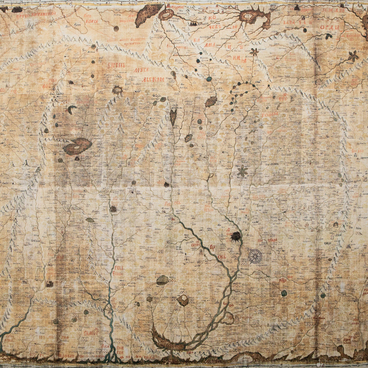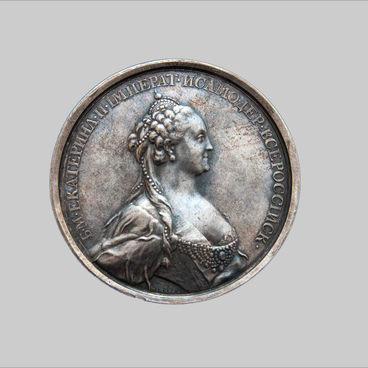A loving cup is a festive vessel for home brew, honey and beer. In the provinces of Russia, this pot was called ‘bratina’, because it was used for drinks at ‘bratchin-feasts’ on pot-luck on Nikolin day, Pokrov or Christmas, as well as on Maslenitsa festival and the patronal festival. Usually, such feasts resolved internal issues of rural or urban society. Kings, boyars, rich merchants used loving cups made of gold and silver, and there were wooden and copper among the people. There were no ornaments on the peasant loving cups, but most of the rounded body was covered with caulked spoons of an elongated shape, which made the silhouette look beautiful and elegant.
The loving cup appeared in the exhibition of the Museum Reserve from the Tobolsk Museum of Fine arts, which existed at the beginning of the 20th century. Similar items in Western Siberia were imported and manufactured in the factories of the Urals — the largest center of the metallurgical industry. A loving cup from the collection of the Tobolsk Museum is a red copper pot-shaped vessel, the body of which is minted with ‘spoons’, between which there are rhombuses with a scaly ornament. Images of birds and animals alternate between the ‘spoons’ in different poses. The inscription under the rim: ‘The loving cup of a good man.’
Usually loving cups were made cup-shaped with a vertical side and a low cylindrical stand soldered to the body. But the piece from the Tobolsk Museum Reserve is markedly different from the bulk of such tableware – it is a pot-shaped.
Historians believe that such vessels originated in the East. It is known that in the 13th–14th centuries Volga Bulgaria traded through the Golden Horde centers with the countries of the East and the Mediterranean. According to imported samples, local craftsmen produced copper bowls, pots, ladles, candlesticks, which were distributed throughout Russia. Such copying gradually led to the fact that there was a stable form of metal tableware that have their own ‘Russian’ name on the territory of the Muscovy. With the beginning of the metallurgical industry in the Ural, the production of household items has also developed. In particular, Ural masters began to produce such a type of tableware as a loving cup
The loving cup appeared in the exhibition of the Museum Reserve from the Tobolsk Museum of Fine arts, which existed at the beginning of the 20th century. Similar items in Western Siberia were imported and manufactured in the factories of the Urals — the largest center of the metallurgical industry. A loving cup from the collection of the Tobolsk Museum is a red copper pot-shaped vessel, the body of which is minted with ‘spoons’, between which there are rhombuses with a scaly ornament. Images of birds and animals alternate between the ‘spoons’ in different poses. The inscription under the rim: ‘The loving cup of a good man.’
Usually loving cups were made cup-shaped with a vertical side and a low cylindrical stand soldered to the body. But the piece from the Tobolsk Museum Reserve is markedly different from the bulk of such tableware – it is a pot-shaped.
Historians believe that such vessels originated in the East. It is known that in the 13th–14th centuries Volga Bulgaria traded through the Golden Horde centers with the countries of the East and the Mediterranean. According to imported samples, local craftsmen produced copper bowls, pots, ladles, candlesticks, which were distributed throughout Russia. Such copying gradually led to the fact that there was a stable form of metal tableware that have their own ‘Russian’ name on the territory of the Muscovy. With the beginning of the metallurgical industry in the Ural, the production of household items has also developed. In particular, Ural masters began to produce such a type of tableware as a loving cup



